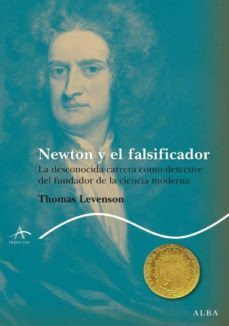Imprescindibles
Más vendidos Libros más leídos eBooks más leídos Todos los libros Todos los libros Autores destacados Series y sagas
Recomendados Libros recomendados Autores destacados Libros que inspiran Vidas con historia LGTBIQ+ English books
Ficción
Literatura Contemporánea Estudios literarios Clásicos Cuentos Poesía Teatro Libros de bolsillo Sagas literarias
Géneros literarios Novela romántica y erótica Novela negra Novela histórica Narrativa fantástica Novela de ciencia ficción Novela de terror Narrativa de humor Narrativa de viajes
No Ficción
Ciencias y tecnología Biología Ciencias Ciencias naturales Divulgación científica Informática Ingeniería Matemáticas Medicina Salud y dietas Formación Idiomas Estilo de vida Libros de Cocina Guías de viaje Narrativa de viajes Deportes Libros de Juegos Manualidades
Humanidades Autoayuda y espiritualidad Ciencias humanas Derecho Economía y Empresa Psicología y Pedagogía Filosofía Sociología Filología Biblioteconomía Estudios filológicos Estudios lingüísticos Estudios literarios Historia y crítica de la Literatura
Infantil
Juvenil
#Jóvenes lectores Narrativa juvenil Clásicos adaptados Libros Wattpad Libros Booktok Libros de influencers Libros de Youtubers Libros Spicy Juveniles Libros LGTBIQ+ Temas sociales Libros ciencia ficción Libros de acción y aventura Cómic y Manga Juvenil Cómic Juvenil Manga Shonen Manga Shojo Autores destacados Jennifer L. Armentrout Eloy Moreno Nerea Llanes Hannah Nicole Maehrer
Libros de fantasía Cozy Fantasy Dark academia Hadas y Fae Romantasy Royal Fantasy Urban Fantasy Vampiros y hombres lobo Otros Misterio y terror Cozy mistery Policiaca Spooky Terror Thriller y suspense Otros
Libros románticos y de amor Dark Romance Clean Romance Cowboy Romance Mafia y amor Romance dramatico Romance dramatico Romcom Sport Romance Otros Clichés Enemies to Lovers Friends to Lovers Hermanastros Slow Burn Fake Dating Triángulo amoroso
Cómic y Manga
Novela gráfica Novela gráfica americana Novela gráfica europea Novela gráfica de otros países Personajes, series y sagas Series y sagas Star Wars Superhéroes Cómics DC Cómics Marvel Cómics otros superhéroes Cómics Valiant
eBooks
Literatura Contemporánea Narrativa fantástica Novela de ciencia ficción Novela de terror Novela histórica Novela negra Novela romántica y erótica Juvenil Más de 13 años Más de 15 años Infantil eBooks infantiles
Humanidades Autoayuda y espiritualidad Ciencias humanas Economía y Empresa Psicología y Pedagogía Filosofía Historia Historia de España Historia Universal Arte Cine Música Historia del arte
Ciencia y tecnología Ciencias naturales Divulgación científica Medicina Salud y dietas Filología Estudios lingüísticos Estudios literarios Historia y crítica de la Literatura Estilo de vida Cocina Guías de viaje Ocio y deportes
Thomas Levenson
Recibe novedades de THOMAS LEVENSON directamente en tu email
Filtros
Del 1 al 4 de 4
Faber & Faber 9780571265756
Already famous throughout Europe for his theories of planetary motion and gravity, Isaac Newton decided to take on the job of running the Royal Mint. And there, Newton became drawn into a battle with William Chaloner, the most skilful of counterfeiters, a man who not only got away with faking His Majestys coins (a crime that the law equated with treason), but was trying to take over the Mint itself.But Chaloner had no idea who he was taking on. Newton pursued his enemy with the cold, implacable logic that he brought to his scientific research.Set against the backdrop of early eighteenth-century London with its sewers running down the middle of the streets, its fetid rivers, its packed houses, smoke and fog, its industries and its great port, this dark tale of obsession and revenge transforms our image of Britains greatest scientist.
Ver más
eBook
ALBA EDITORIAL 9788484286479
Durante la segunda parte de su carrera, Isaac Newton se hizo cargo de la Casa Real de la Moneda y se dedicó a perseguir al falsificador William Chaloner, a quien finalmente consiguió desenmascarar. Un titulo entretenidisimo que nos muestra los años de esplendor de Newton como hombre de ciencia, la reconstruccion del Londres de finales del siglo XVIII, la divulgacion del paradigma cientifico nacido de sus investigaciones y la divulgacion de aspectos politicos y financieros del momento.Una faceta desconocida de la vida del fundador de la ciencia moderna: su labor como intendente de la Real Casa de la Moneda y su aplicacion de los principios de la investigacion empirica a la captura de falsificadores.
Ver más
Tapa blanda
BANTAM BOOKS 9780553378443
In a book that is both biography and the most exciting form of history, here are eighteen years in the life of a man, Albert Einstein, and a city, Berlin, that were in many ways the defining years of the twentieth century. Einstein in Berlin In the spring of 1913 two of the giants of modern science traveled to Zurich. Their mission: to offer the most prestigious position in the very center of European scientific life to a man who had just six years before been a mere patent clerk. Albert Einstein accepted, arriving in Berlin in March 1914 to take up his new post. In December 1932 he left Berlin forever. Take a good look, he said to his wife as they walked away from their house. You will never see it again. In between, Einsteins Berlin years capture in microcosm the odyssey of the twentieth century. It is a century that opens with extravagant hopes--and climaxes in unparalleled calamity. These are tumultuous times, seen through the life of one man who is at once witness to and architect of his day--and ours. He is present at the events that will shape the journey from the commencement of the Great War to the rumblings of the next one. We begin with the eminent scientist, already widely recognized for his special theory of relativity. His personal life is in turmoil, with his marriage collapsing, an affair under way. Within two years of his arrival in Berlin he makes one of the landmark discoveries of all time: a new theory of gravity--and before long is transformed into the first international pop star of science. He flourishes during a war he hates, and serves as an instrument of reconciliation in the early months of the peace; he becomes first a symbol of the hope of reason, then a focus for the rage and madness of the right. And throughout these years Berlin is an equal character, with its astonishing eruption of revolutionary pathways in art and architecture, in music, theater, and literature. Its wild street life and sexual excesses are notorious. But with the debacle of the depression and Hitlers growing power, Berlin will be transformed, until by the end of 1932 it is no longer a safe home for Einstein. Once a hero, now vilified not only as the perpetrator of Jewish physics but as the preeminent symbol of all that the Nazis loathe, he knows it is time to leave.
Ver más
Tapa blanda
Del 1 al 4 de 4






























